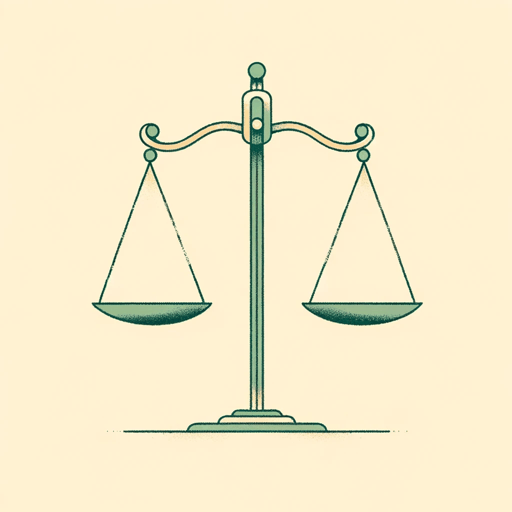40 pages • 1 hour read
Nicole Gonzalez Van CleveCrook County
Nonfiction | Book | Adult | Published in 2016A modern alternative to SparkNotes and CliffsNotes, SuperSummary offers high-quality Study Guides with detailed chapter summaries and analysis of major themes, characters, and more.
Summary and Study Guide
Overview
Crook County: Racism and Injustice in America’s Largest Criminal Court is a work of nonfiction by Nicole Gonzalez Van Cleve, an American sociologist specializing in issues of race, racism, and criminal justice. Published in 2016, the book exposes the deep-seated racism and corruption of the criminal justice system in Cook County, Illinois, focusing on the court apparatus. Drawing on more than a decade of ethnographic research, Gonzalez Van Cleve argues that legal processes, such as prosecutorial discretion, bail hearings, and sentencing practices, are systematically biased against poor people of color. Crook County: Racism and Injustice in America’s Largest Criminal Court won 11 awards and finalist distinctions for its contributions to sociology, criminal justice, law, social justice, and media, including the American Sociological Association’s Distinguished Book Prize, the discipline’s highest book honor.
This study guide references the 2016 edition published by Stanford University Press.
Content Warning: The source material addresses racism and racial inequity in the US criminal justice system. References to racial degradation, including the use of the N-word, and racial violence appear throughout the text.
Summary
Crook County: Racism and Injustice in America’s Largest Criminal Court is organized into five chapters, with an Introduction, a Conclusion, and a robust scholarly apparatus comprising notes and a method’s appendix. The Introduction, “Opening the Courthouse Doors,” presents the inescapable racial divide of the Cook County Courts. This divisiveness fuels a pervasive culture of Racial Colorblindness in the Courts that clothes racial inequity in non-racial terms.
Chapter 1, “Separate and Unequal Justice,” describes how racialized justice operates at the Cook County Courts. Gonzalez Van Cleve describes the physical and symbolic barriers that create an ‘us’ versus ‘them’ dynamic in the courthouse. Her emphasis on how the sheriff patrols these barriers introduces The Role of Court Professionals in Racialized Justice as one of the book’s recurring themes.
Chapter 2, “Of Monsters and Mopes: Racial and Criminal ‘Immorality,’” posits that the monster and mope construct, popular at the Cook County Courts, casts racist behavior in non-racial terms. Court professionals classify defendants as monsters (‘real’ threats) or mopes (lazy, unmotivated people). Mopes are deemed immoral and thus undeserving of equal treatment. Within the colorblind spaces of the court, the reasoning is that Black and Latinx people are treated poorly not because of their skin color, but because of their immorality.
Chapter 3, “Race in Everyday Legal Practices,” focuses on the role of defense attorneys in racialized justice. Defense attorneys, including public defenders, are active participants in the racialized culture of the Cook County Courts. Like sheriffs, prosecutors, and even judges, defense attorneys ignore and verbally abuse defendants, in addition to pressuring them to accept plea deals to keep the system running. However, defense attorneys strategically reflect court culture back at other court actors. Unable to advocate too rigorously without repercussions, defense attorneys use their knowledge of court culture to win favors for their clients, including reduced sentences.
Chapter 4, “There Are No Racists Here: Prosecutors in the Criminal Courts,” shifts the emphasis to the prosecutors of Cook County. Gonzalez Van Cleve argues that, like other court professionals, prosecutors have to reconcile the existence of racial bias with ideals of race neutrality. Prosecutors draw distinctions between their personal beliefs and racialized court practices, which leave them with a clean conscience. Moreover, they point to systemic contributors to racialized justice, such as biased policing and the war on drugs, thereby locating racial bias in the system at large, not in individuals.
Chapter 5, “Rethinking Gideon’s Army: Defense Attorneys in the Criminal Courts,” addresses The Intersection of Race and Class in the Criminal Justice System. Defense attorneys use class markers, such as clothing, accessories, dialect, and education, to determine the worthiness of their clients. Middle-class clients, most of whom are white, receive time and resources from their attorneys. By contrast, poor clients, or “garden-variety” defendants, receive subpar representation. Racialized justice persists across the United States, argues Gonzalez Van Cleve, because it happens behind closed doors. Only going to court and bearing witness en masse can bring an end to the injustice.

